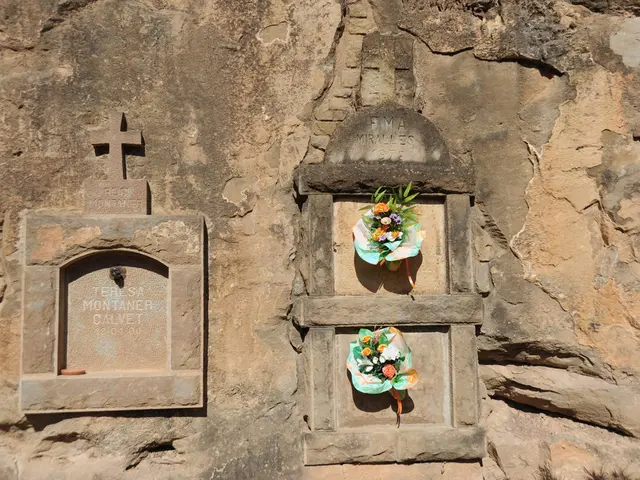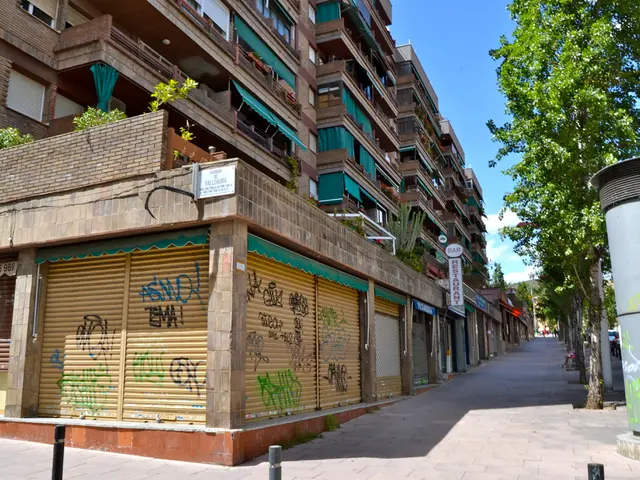Modern and Traditional Asian Art: A Blend of Old and New
Modern Asian art thrives at a captivating junction of tradition and novelty, embodying artists who weave ancient symbolism with contemporary art practices. This dynamic genre offers a rich vista where past and present intertwine, addressing the ever-evolving narrative of cultural identity.
Years ago, Asian art was often synonymous with ancient traditions, paintings, calligraphy, and pottery. Today, contemporary Asian art signifies a seismic shift, as artists boldly experiment with cutting-edge mediums like video installations, performance art, digital media, and mixed media. By merging tradition with modern themes, these artists contribute to a constantly evolving discourse on identity, globalization, and societal change.
Focusing on countries such as China, Japan, South Korea, India, and Southeast Asia, one finds vibrant contemporary art scenes that deliver distinct perspectives, rooted in their unique cultural heritage.
Historical background and traditional motifs serve as the foundation upon which contemporary artists build. In China, for instance, artists revitalize ancient ink wash painting and calligraphy techniques, bending them to express themes of language, communication, and cultural identity.juxtaposing tradition with modernity is a recurring theme in Japan, where artists like Takashi Murakami merge traditional Japaneseaesthetics with pop culture to create the "Superflat" style—a blend of modern flat perspectives and the commercial allure of anime and manga.
The marriage of tradition and modernity strengthens the link between the past and present, highlighting the evolutionary impact of modernization and globalization on these time-honored traditions.
Modern techniques and mediums are a hallmark of contemporary Asian art, arising from an eagerness to experiment and adapt to the current technological and social landscape. Emerging mediums such as installation art, video art, and digital media empower artists to stretch the boundaries of artistic expression, fostering immersive experiences that challenge viewers' perceptions and foster active participation.
Artistic collaboration between Asian and Western artists further enriches contemporary Asian art. These cross-cultural collaborations lead to innovative works that resonate with universal themes while reflecting Asian cultural nuances. Collaborative works reflect the influence of globalization on contemporary Asian art, creating unique artistic expressions that seamlessly integrate with global art movements while retaining their Asian roots.
Art fairs, biennales, and international exhibitions provide platforms for Asian artists to showcase their art on the global stage, bolstering their visibility and fostering global artistic dialogue. However, these events also present challenges, such as the risk of cultural homogenization and commercial pressures. navigating these complexities while preserving cultural integrity and artistic authenticity involves a delicate balancing act, which many contemporary Asian artists negotiate successfully.
Contemporary Asian art often serves as a platform for socio-political commentary, addressing critical social issues like environmental degradation, human rights, and economic disparity. Champions of socio-political critique like Ai Weiwei and Nalini Malani employ their art as a tool for awareness and critical reflection, underscoring the importance of art in fostering social change.
The market for contemporary Asian art has experienced rapid growth, mirroring the burgeoning global interest and investment in the sector. Auction houses, galleries, and collectors have increasingly acknowledged the value and potential of contemporary Asian artworks. As the market thrives, the industry faces challenges such as the balancing act between artistic freedom and commercial success.
Ultimately, contemporary Asian art represents a dynamic, evolving genre that pays homage to the past while remaining rooted in the present. By blending tradition and modernity, artists create works that reverberate across a wide range of audiences and mirror the complexities of their socio-cultural landscapes.
- The government encourages education-and-self-development programs focusing on contemporary Asian art, recognizing its value as a reflection of cultural heritage and a beacon for global socio-political commentary.
- Incorporating elements from science and technology, some artists create interactive home-and-garden installations that challenge traditional concepts of art and invite viewers to engage with the art in unconventional ways.
- Fashion-and-beauty panels and seminars discuss the influence of contemporary Asian art on popular culture, exploring how artistic motifs and aesthetics have taken center stage in clothing design, makeup trends, and lifestyle choices.
- General-news media shares stories about the success of sports figures hailing from Asian countries, highlighting the role of cultural heritage in shaping their athletic prowess and contributing to their global recognition.
- Universities offer classes in the critical analysis of contemporary Asian art within the context of societal change, fostering an informed public that appreciates the diversity and complexity of Asian art’s contribution to the international art world.







